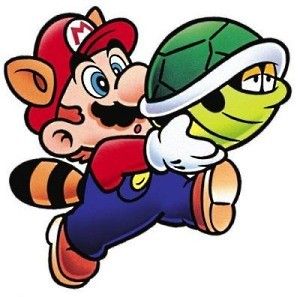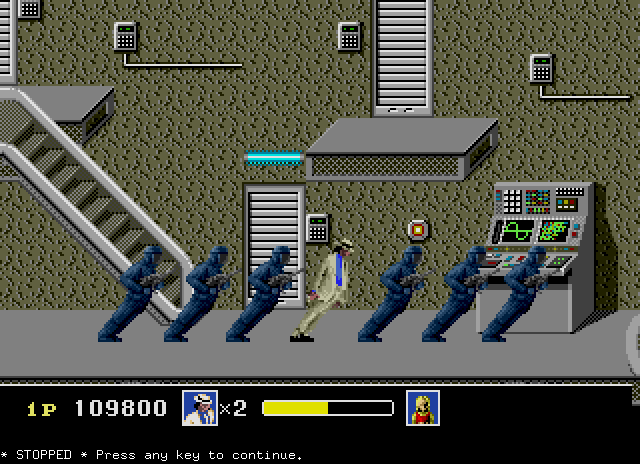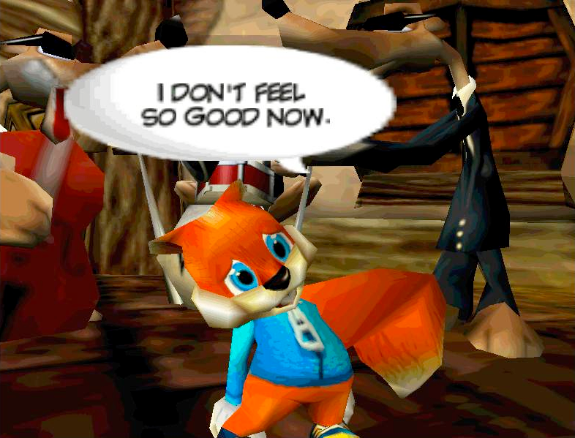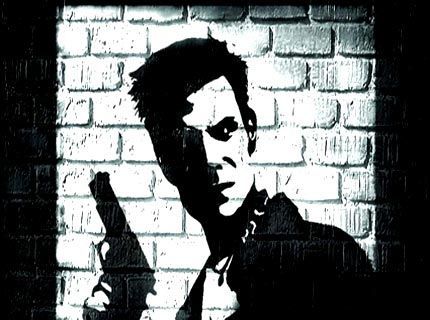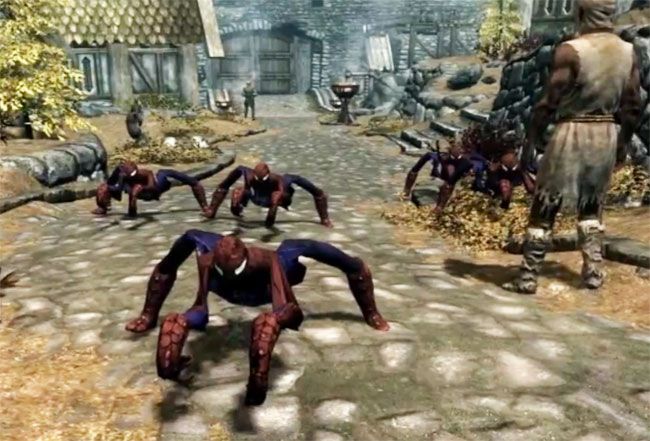I was playing Skyrim the other day, heading north on the road out of Whiterun, when an Argonian approached me. I’ve always been rather keen on lizardmen, so I stopped to listen to what he had to say. “Hey man,” he hissed, fighting a telltale junkie itch, “you wanna buy some skooma?” I didn’t hesitate, knowing that to do so would be taken as a sign of weakness. Instead I did what any rational bosmer rogue would do; I ran him off the road, killed him, and took his drugs, his money, and his shoes.
It didn’t strike me as odd how naturally such a grisly response occurred until I was miles away. Without a second thought, I had unleashed a Tarantino-esque attack on the hapless Argonian, leaving him to be picked clean by dogs while I traipsed about the land, cranked off my nut on skooma.
I probably don’t need to mention that this sort of thing doesn’t happen in my day to day life, but it gave me pause because I suddenly realized that it does, in fact, happen to some people. Whether it is being run by lizardmen or just regular people-men, the drug trade can be a violent, ugly business, despite the sweet dreams its product promises. The inclusion of such a gritty, specific niche of real life society in a fantasy setting got me thinking: how does the inclusion of drugs ground a video game in reality? What about games that sensationalize drug abuse? Or, conversely, what of the games which make unabashed attacks on drug culture at large? What are we, as gamers, learning as we gobble a bottle of pills on the mean, digitized streets of… well, take your pick: New York, Liberty City, Whiterun, Midgar?
Super Mario Bros. [NES, 1985]
Anyone who feels insulted by seeing Mario’s name on this list, please just bear with me for a minute and look at this objectively. The protagonist of this game is a young-to-early-middle-age Italian plumber who, after years of trying to win a woman from a brutish rival, moves on to a place called The Mushroom Kingdom. There, he chows down on some toadstools, starts punching bricks, kicking turtles, and snatching stars right out of the air. Later, he turns into a flying raccoon, rides in a man-sized mechanical boot, and stars in a movie wherein former easy rider Dennis Hopper tries to shoot him with a devolution gun.
Now tell me honestly: do you really believe that drugs had no part in this? Do you believe that the entire staff of this game could have missed that they were making an extended, surrealistic drug reference? Peach, please. This game is the most innocuously disguised drug reference since Puff the Magic Dragon. Don’t get me wrong – I’m not saying that they went and made a game about doing drugs to pull one over on society at large… but they did make a game where tripping on ‘shrooms is paramount to the player’s success. Super Mario Bros is great. Better than great. Epoch-defining. But it remains one of the trippiest games (and franchises) in gaming history not in spite of the casual insanity glaring from its every pixel, but because of it.
Mario gets away with being face-meltingly high all the time because the execution of each game is so whimsical and non-threatening that children don’t even think twice about how utterly bizarre it really is. Each game focuses on pure, lighthearted fun that somehow consistently manages to be entertaining for children and adults alike – making it easy to see why Mario has taken almost zero flak for decades of psychedelic drug abuse during his career as Nintendo’s mascot.
Moonwalker [Sega Genesis, 1990]
I might be going out on a limb here, but I’d be willing to bet that most of our readers missed Michael Jackson’s crowning cinematic achievement, Moonwalker. This movie, and the game which followed, came out during a simpler time – after the King of Pop turned white but before the rumors of his pedophilia started circulating. The movie is basically a showcase for his videos, intercut with narrative segments about him battling an evil drug dealer who targets children. The misguided logic of a businessman who targets just about the only demographic who can’t actually pay him for his product almost makes sense in comparison to the rest of the movie, in which Michael Jackson has a dance off with a giant claymation rabbit, indirectly compares himself to Ghandi, and turns himself into a futuristic spaceship that screams Joe Pesci to death (seriously).
Moonwalker the movie made so little sense that porting it to consoles was one of the saner decisions they made. In the game, MJ walks around and dances at his enemies, inspiring them to do the same. The plot, inasmuch as there is one, is the same as the movie – MJ is sick to death of some drug dealers, and he’ll be damned if they’re going to peddle their wares to the children he has sworn to… *ahem*… ‘Protect.’ And yes, before you ask, it ends with Michael turning into a Voltron-esque spaceship and finishing his nemesis with his terrible techno-banshee wail.
This game is unique among the titles in this article in that neither the protagonist nor the antagonists are ever shown imbibing drugs of any kind, but in this case that very absence is significant. American readers might assume that the game was nothing more than a product of its time – a fabled era in which Captain Planet informed us in no uncertain terms that looting and polluting are not the way, and people actually took D.A.R.E. programs seriously.
While there is some validity to that assumption, Nintendo of America’s campaign of video game censorship had as much, if not more, to do with it. As Nintendo had all but cornered the market at that time, smaller companies like Sega had to either follow suit or incite the wrath of millions of parents and politicians who already distrusted video games. For better or worse, this period of strict conservativism was followed, as they so often are, by a tidal backlash of sensationalized sex, violence, and drugs that would do Sid Vicious proud.
Conker’s Bad Fur Day [2001]
Conker’s Bad Fur Day is one of those games that tells you everything you need to know about it within the first five minutes. It opens with the dulcet tones of Purcell’s Music for the Funeral of Queen Mary, and we see the eponymous hero sitting on a throne, glaring right out of the screen, surrounded by his droogs as he delivers the first bit of narrative monologue. Those who missed the A Clockwork Orange reference there needn’t worry, as the game quickly dispels any lingering doubts about the nature of its intended audience – the very next scene, the first in which the player controls Conker, shows the squirrel reeling about caught in the grips of a gnarly hangover, vomiting freely as he searches for some alka-seltzer.
This game wasn’t the very first to feature an alcoholic protagonist, but its approach to dealing with the subject matter was bold. Developer Rare began the game as another ‘fun for the whole family’ romp like Banjo Kazooie and Donkey Kong 64, but shifted gears in a radical direction not only for the time, but for Nintendo in particular. Taking inspiration from contemporary shows like South Park, the team behind Conker decided to man up and give Nintendo of America the finger, filling the game with poo jokes, foul language, blatant sexual overtones, and Bacchanalian booze fests.
Nintendo, being… well… Nintendo… allowed the game to be released, but did not endorse it in any of their own publications, be they print or online. Despite limited advertizing and poor sales, the game gained respect in all the right places, lauded by critics and fans alike. There was, of course, a fair bit of controversy, but the developers didn’t make a game featuring a giant singing pile of feces as a boss with any illusions about getting away scot-free.
Although Conker may not have gotten the exposure he deserved, he blazed a trail that others would follow. Nowadays people hardly bat an eye when they see a character pounding beers in a video game, and though they might not realize it, Conker was one of the brave and happy few who drew the fire of publishers and angry parents alike so his booze-addled comrades could take the stage. Thanks, little buddy.
Max Payne [2001]
If Robert Rodriguez, John Woo, and Frank Miller all got together and decided to make a video game, it would probably turn out a lot like Max Payne. Payne is a New York City cop who has gone undercover to aid his vendetta against drugs and the people who use them. Far from being content to dance his enemies into submission, the squinchy-faced detective instead flips the eff out, uses his phenomenal psychic powers to slow time to a crawl, and kills almost every other character in the game.
Drugs are the lynch pin that holds the game’s plot together. Payne’s wife and baby daughter were brutally murdered by a bunch of junkies who were high on valkyr, a fictional designer drug which seems to be sort of a cross between crack and LSD. Payne is understandably upset by this, hence the vendetta. However, the drug barons who rule the noir world which Max Payne inhabits are not content to stand idly by while the modern day Eliot Ness busts up their racket – they take the fight right back to him, and hit him where it hurts by injecting him with a supposedly lethal dose of valkyr.
From a plot perspective, this is one of the most interesting implementations of drug use I have seen in a video game. Games which make more casual use of intoxicants tend to limit its effects to making the controls awkward – reversing the x and y axis, for example, or making the camera go wonky and blurred – but Max Payne doesn’t make it so simple. Instead, you play an entire scenario where Payne is literally out of his mind – and things get brilliantly weird.
You start off with a vision of Max taking a more direct role in the murder of his wife and child, which is sad but also kind of standard tortured protagonist fare. Then, a phone starts ringing, and you pick it up to hear: “Bartender shiny stuff in dreams are made of stooped necromancers. He sings like a banana wrist, having strayed too close to the constellation on their shaved skulls. The rain of frogs ended…” Pretty strange, especially considering that if you listen carefully you realize that the voice on the other end of the receiver is Max Payne himself – as if the phone is a tenuous conduit between his subconscious and his babbling, out of control physical body. Valkyr, not having finished with the hapless cop, keeps working its voodoo on him. Finally, you find letters on a desk written in Max’s dead wife’s handwriting, telling him “You are in a graphic novel… you are in a computer game, Max.” Suddenly Max becomes self aware, breaking the fourth wall and seeing his own word bubbles and health bars, and starts babbling about slow motion fighting and other technical aspects of the game.
Now, I won’t make any assumptions about our readership, but if you’ve ever listened to someone in the depths of a truly heinous psychedelic drug binge, you’ll know they got this one eerily correct. Seeing various layers of reality, chemically induced synesthesia (the ability to perceive one type of sensory input as another; in this case, seeing the auditory input of voices as speech bubbles), and altered perceptions of time are all common with high enough doses of hallucinatory substances. Couple that with the vague awareness of something not being right, of not being able to shake a crippling feeling of detachment between the conscious and subconscious minds, and you’ve got yourself one of the best bad acid trips in gaming history – and a much more compelling example of why not to indulge in drug abuse than MJ provided with Moonwalker.
Also, despite the fact that this is already the longest section of the article thus far, I feel like I should also point out that the game’s sole health item, little bottles of pills shamelessly labeled as “Painkillers,” are more than just a bad pun. Think about it for a minute; undercover cop on a drug raid finds a mysterious bottle of pills on the body of someone he just shot, and just eats them. Chances are those are a little stronger than a bit of Tylenol PM, but you know, when in Rome…
The Elder Scrolls V: Skyrim [2011]
And we’re back where we started. I return to Skyrim not to delve much deeper into the specifics of drug usage in Tamriel, but because after researching and writing the rest of this article, I can honestly say that this game is the most logical cap to the discussion.
Allow me to elucidate.
Skyrim’s story depends easily as much on the player’s input as it does on the plot it presents. I don’t mean to say that Skyrim presents a host of different endings and branching storylines like Dragon Age or Heavy Rain, but the sheer scope of the game and the fact that you play as a silent protagonist means that a lot of the decisions you make aren’t handed to you, you have to actively seek them out. You can skip the entire tale of the Dovahkiin and spend eighty or so hours robbing houses or hunting deer and still feel as though your character has grown. The game passes no judgment – tanning leather and collecting herbs are just as legitimate as slaying giants with the Companions. You can become a hero, a villain, a bard, a burglar, an assassin, a spouse, a smith, a vampire, -- just about anything you choose, and the world keeps turning.
So why not let you become a drug addict?
The game doesn’t force you to take skooma. When you’re approached by drug dealers you don’t have to reflexively mug them like I did – you can take the high road and walk away, it’s completely in your hands. Drug use isn’t sensationalized; it amounts to a temporary stat boost and a potential fine if you’re caught by the law – and in either case, it is only a small part of the world. The game offers no judgment either positive or negative, drugs are simply another part of life in Skyrim to either engage with or ignore at your discretion… Just like real life.
This attitude earns Skyrim my vote for the most mature use of drugs in a video game.
Honorable Mentions:
There are, of course, a ton of other games in which drugs feature prominently; the ones I chose to discuss were selected for the variety of different talking points they presented. The games in this category fell by the wayside either because I felt they’ve been already been discussed to death, they didn’t have a strong enough presence of drugs to be relevant, or I simply found something of greater personal interest to me for the relevant generation. In any case, here are a few that deserve a little acknowledgment, presented in a few short strokes each for brevity’s sake.
In the recent game Catherine, players spend a fair amount of time drinking alcohol and texting between the protagonist’s two love interests. Drinking makes Vincent clumsy and ineffectual in the real-world segments of the game, but makes him faster and more powerful in his dream-segments – making this game the most realistic dating sim ever.
The Bioshock series does some interesting things with addiction, and while the ADAM substance is technically a mass of chaotic stem cells, anything that gives you super mutant powers at the cost of a potentially debilitating monkey on your back fits well enough into the drug discussion.
All of you out there have probably already made up your minds about the Grand Theft Auto series so I won’t bore you with it for too long, but it is interesting that GTA IV allows drinking and driving. Honestly, compared to the other stuff that goes on in that series, a little DUI doesn’t seem like such a big deal – which raises a whole host of questions that I’ll let you readers sort out for yourselves.
Meanwhile if you’re looking for a little fear and loathing in an RPG, always remember: there is nothing in the world more helpless and irresponsible and depraved than a mage in the depths of an ether binge. Final Fantasy fans know that huffing ether in-game is good for more than just confusion spells – despite Hunter S. Thompson’s warnings, FF mages have downed pints of the rotten stuff in the pursuit of arcane mastery. Or maybe that’s just what they’ve been telling you it’s for…


